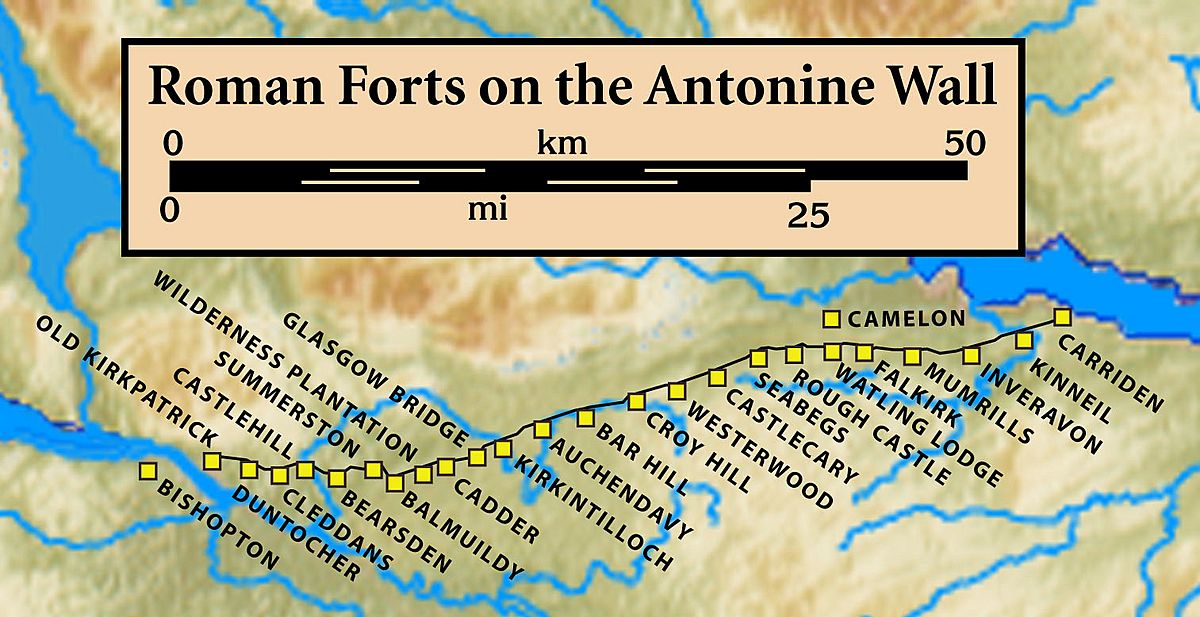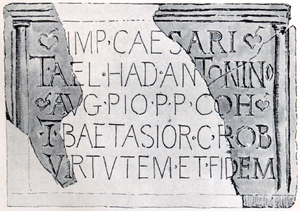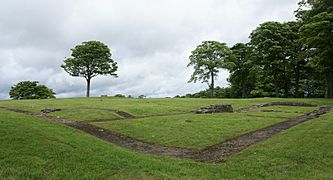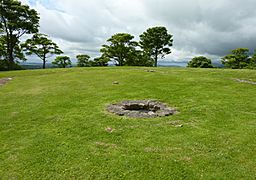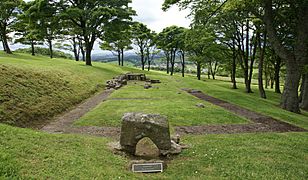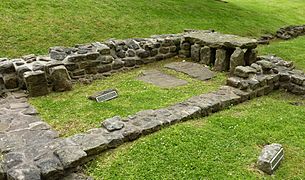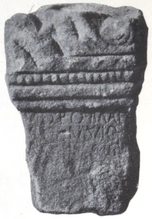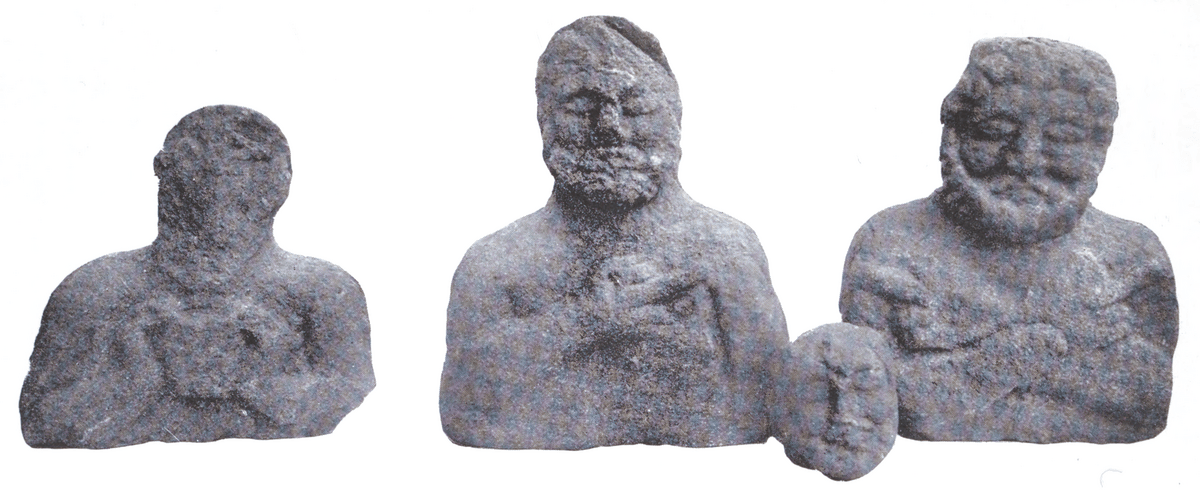Bar Hill Fort facts for kids
Quick facts for kids Bar Hill Fort |
|
|---|---|
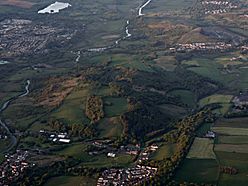
Bar Hill and Twechar with Kilsyth and Croy in the background
|
|
| Alternative name(s) | Barr Hill |
| Founded during the reign of | Antoninus Pius |
| Place in the Roman world | |
| Province | Britannia |
| Stationed military units | |
| — Legions — | |
| 2nd 20th |
|
| — Cohorts — | |
| First Cohort of Baetasians, First Cohort of Hamians |
|
| Location | |
| County | East Dumbartonshire |
| Country | Scotland |
| Site notes | |
| Excavation dates | 1902-1905, 1978-1982, 1982-1984 |
| Archaeologists | George Macdonald, Alexander Park |
| Exhibitions | Hunterian Museum |
Bar Hill Fort was a Roman fort located on the Antonine Wall in Scotland. It was built around the year 142 A.D. You might see its name spelled as Barr Hill on older maps. Today, you can explore computer models and special scans of the fort.
Sir George Macdonald was an archaeologist who wrote about digging up the site. Many ancient objects have also been found nearby in a place called Shirva.
Contents
Life at Bar Hill Fort
Roman forts along the Antonine Wall usually held about 500 soldiers. Larger forts, like Castlecary, could house up to 1000 soldiers. It's thought that women and children also lived near these forts. Even though soldiers weren't officially allowed to marry, families were often present. Large groups of civilians also lived around the fort.
Discoveries from the Well
Archaeologists found a very deep well at Bar Hill Fort, about 43 feet deep! Many items were pulled out of this well. It's believed these items were thrown in when the Romans left the fort.
Among the finds were shoes belonging to men, women, and even children. This suggests that families lived at or near the fort. Other interesting items found include an altar, bones, shells, and old coins. Parts of buildings, like columns and wooden beams, were also recovered. Even a piece of the well's pulley system was found.
Religious Finds
In 1895, an altar (RIB 2167) dedicated to Silvanus, a Roman god of the woods, was discovered. It's thought this altar came from a small shrine outside the fort. This altar is now kept at the Hunterian Museum in Glasgow. Other altars, like one for Mars Camulus, were also found.
Exploring the Fort's Remains
Bar Hill Fort was one of more than a dozen forts built along the Antonine Wall. This wall was constructed around 140 AD. It followed a short path across Scotland's central belt. This same route was later used for the Forth and Clyde canal in the 1700s.
On the south side of the hill, you can still see the remains of the fort's headquarters. This was the biggest building inside the fort. You can also spot the ruins of a Roman bathhouse.

